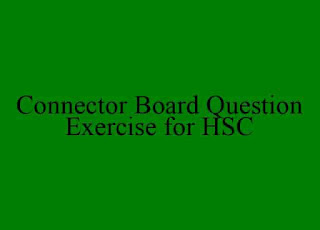What is tone in literature definition
What is tone?
Tone is a literary device used to reflect the writer’s attitude toward a character, situation or the subject matter of a text. It helps to make a relationship between the writer and the readers that influences the readers to have a particular attitude and feelings toward a certain character, situation or text.At the same time, it guides the readers not to take any unfair tone to any character or text. It is true that sometimes the tone may reflect the writer’s personal attitude or opinion, but it is less about what the writer feels and more about how that writer wants the reader to feel. So, to have a better understanding of any text, it is important to understand the tone of the text.
The tone of a piece of writing is like the tone of your voice when you speak or your body language around another person. If you want to make people laugh you may have a light and funny tone of your voice which must be the opposite when you will deliver a piece of serious information. So before talking or writing, you have to set your tone.
Writers use several techniques to convey tone including-
Choice of words: Understanding tone involves picking the right words. Authors choose words that fit the tone they want. Formal writing uses big words, while informal writing is casual. This affects how readers feel about the topic.
Voice of the author: The way a writer talks is important for tone. It’s like their personality, how they see things, and how they connect with readers. They can sound like an expert or a friendly friend. They might sound thoughtful, strong, funny, or even a bit mean. This makes the text feel different and helps us understand it better.
The tone of a piece of writing is like the tone of your voice when you speak or your body language around another person. If you want to make people laugh you may have a light and funny tone of your voice which must be the opposite when you will deliver a piece of serious information. So before talking or writing, you have to set your tone.
Writers use several techniques to convey tone including-
Choice of words: Understanding tone involves picking the right words. Authors choose words that fit the tone they want. Formal writing uses big words, while informal writing is casual. This affects how readers feel about the topic.
Voice of the author: The way a writer talks is important for tone. It’s like their personality, how they see things, and how they connect with readers. They can sound like an expert or a friendly friend. They might sound thoughtful, strong, funny, or even a bit mean. This makes the text feel different and helps us understand it better.
Feelings: Tonality creates feelings in writing, from serious to fun. It affects how readers feel. Mood and tone work together to set the emotions of a text. Tone shows how the writer feels about things, while mood shows how readers feel when reading. Tone brings out emotions, and mood shows how we feel.
Figurative language: It is the use of words and expressions in an unusual and imaginative manner. Simile and metaphor are two good examples of figurative language.
Types of Tone
A defined tone allows readers to connect with the writer. When you read a literary piece, you may find different tones like cheerful and lighthearted, regretful, humorous, pessimistic, nostalgic, melancholic, joyful, and persuasive.
Now, let’s know about the different types of tones that you will usually experience in a text!
Formal or Informal Tone
A formal text tone is serious, respectful, and professional. It shares information clearly and objectively. Formal language is precise and organized, without casual words. It shows authority and expertise, and the tone can be neutral, informative, persuasive, or instructional. It avoids personal emotions. The Informal text tone is friendly and relaxed, using everyday words. It aims to connect with readers like in a conversation. The tone changes based on relationship, context, and feelings—like humour, empathy, or nostalgia. The informal tone is clear and familiar, but less strict than the formal tone.
Nonassertive Tone
If a text just presents facts and does not use any information or words to convince you, the tone is nonassertive. I’m sorry you lost your ticket. Kindly get off the bus and get another one.- This is an example of a non-assertive tone.
Assertive Tone
And, if there is no sign of anger, and the expression is calm and peaceful, it means the tone is assertive. I really like the way you talk to me. I’ll thank you for your manners. Here the tone is assertive.
Aggressive Tone
Again, if a text attacks another person using words and showing anger, the tone is aggressive. You are a terrible liar!- is an example of an aggressive tone.
Tone of Triumphant
If the writing shows how the main character overcomes difficulties to achieve success, then the tone is triumphant.
Calm and thoughtful Tone
The writer’s tone is calm and thoughtful when s/he invites readers to explore the character’s feelings and thoughts.
Bitter Tone
The tone in the text is bitter when the writer shows how the character is upset and disappointed with the world.
Tone of Amazement
Again, the writing carries a tone of amazement, as characters discover the magic of a hidden place.
Excited Tone
The writer’s tone is excited if s/he shows characters starting an adventurous journey with unknown challenges.
In short, the tone of a text may be of various kinds and it mostly depends on the word choice of the writer and how the reader perceives it.


